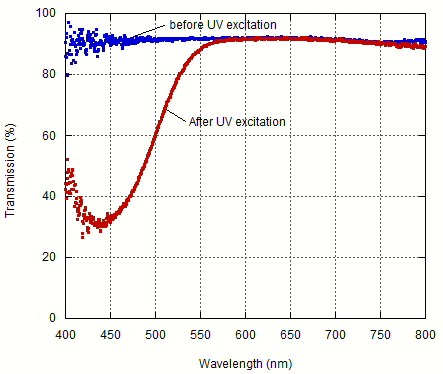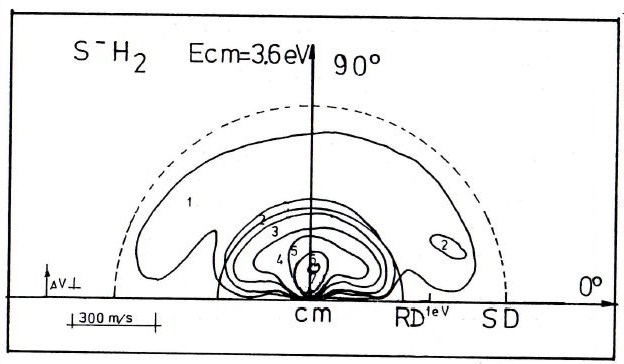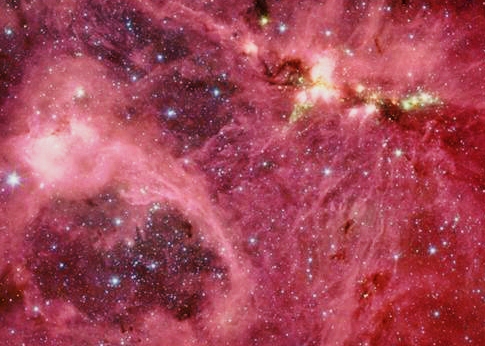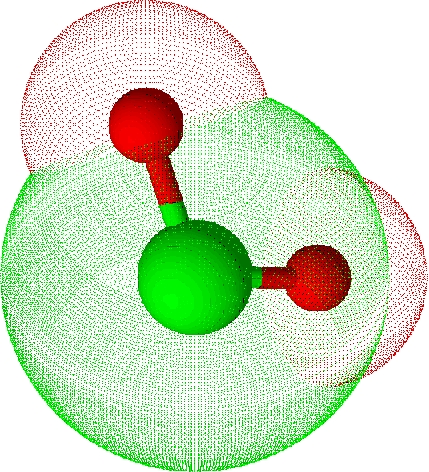Dr. Kamal Goudjil technical and Science interests include:
• Molecular Dynamics
• Atomic and Molecular Collision Dynamics
• Mass Spectrometry (Ion Optics, Ion Spectrometry...)
• Ion beams, Molecular beams, etc.
• Optical Spectroscopy (Absorption, Transmission...)
• Lasers (IR, VIS, UV)
• Laser spectroscopy (Multiphoton Ionization...)
• Photochromic molecules as UV detectors
• Particle detectors
• Astrophysics
• Mathematics
On the right is a schematic experimental set-up of a crossed-beam collision between a negative ion beam (e.g., S-) and a supersonic beam of hydrogen (H2), performed by Dr. Goudjil. The ion beam formed in a discharge source is mass selected and is guided and decelerated using a series of ionic lenses before crossing the H2 beam. The neutral particles (e.g., S, SH, SH2) and the charged particles (electrons and H- ions) products of the collision are detected in multicoincidence on position sensitive detectors (PSDs).
On the right few plots providing the optical transmission properties of few photochromic systems that Dr. Goudjil developed in some of his patented applications while at Solartech.
On the right is a 3D representation of a velocity diagram in the center of mass frame for the
S-/H2 collisional system at a collision energy of 3.6 eV. Also represented is a velocity contour map for the same collisional system at the same collision energy. The intensity A (Z-axis) provides the relative probability or cross-section of scattered particles as a function of velocity components (parallel and perpendicular to the initial relative velocity of S- and H2) of the scattered particles. The peak observed about the center of mass corresponds to the channel SH2 + e- (formation of SH2), surrounding this peak of SH2 is a forward-backward configuration corresponding to the channel SH+H+e-. The outward semi-ring-like structure corresponds to the channel S+H2+e-. The relative contribution of the different processes/channels may readily be seen in either the 3D representation or the velocity contour map representation.
In order to provide an insight on the dynamic of the formation of the illusive CNH molecule, isomer of HCN molecule, Dr. Goudjil investigated the collision between molecular negative ion CN- and H2. CNH molecule has been detected in interstellar media, for example, in DR21 region in constellation cygnus within our galaxy (see IR picture on the right). The CN-/H2 collisional system presents numerous challenges in comparison to S-/H2 collisional system (see above) as it involves additional degrees of freedom such as the unknown rotational energy of the CN- projectile. The obtained experimental results appear to show a complex dynamic hinting to the formation of CNH, as well as the ubiquitous HCN. However, no definitive conclusion can be made. The Figure on the right shows an example of a 3D velocity vector diagram for the channel CN-+H2 leading to the formation HCN/CNH and H-.
Dr. Goudjil was also involved in investigating the dynamic of the reactivity of ClO2 under UV radiation in Stratosphere. There are two isomers of ClO2, the symmetrical stable OClO (see 3D structure on the right) and the reactive ClOO. Chlorine dioxide ClOO is commonly invoked in mechanisms which lead to ozone depletion over Antarctica (see, for example, the NASA picture on the right showing the total ozone over the Antarctic pole). Orbital correlation diagrams in Cs symmetry and C2v symmetry indicate that OClO under UV radiation may dissociate into various channels including ClO+O and Cl+O2 (in various states) and/or transform into its unstable isomer ClOO which in turn dissociates into Cl+O2.
• Molecular Dynamics
• Atomic and Molecular Collision Dynamics
• Mass Spectrometry (Ion Optics, Ion Spectrometry...)
• Ion beams, Molecular beams, etc.
• Optical Spectroscopy (Absorption, Transmission...)
• Lasers (IR, VIS, UV)
• Laser spectroscopy (Multiphoton Ionization...)
• Photochromic molecules as UV detectors
• Particle detectors
• Astrophysics
• Mathematics
On the right is a schematic experimental set-up of a crossed-beam collision between a negative ion beam (e.g., S-) and a supersonic beam of hydrogen (H2), performed by Dr. Goudjil. The ion beam formed in a discharge source is mass selected and is guided and decelerated using a series of ionic lenses before crossing the H2 beam. The neutral particles (e.g., S, SH, SH2) and the charged particles (electrons and H- ions) products of the collision are detected in multicoincidence on position sensitive detectors (PSDs).
On the right few plots providing the optical transmission properties of few photochromic systems that Dr. Goudjil developed in some of his patented applications while at Solartech.
On the right is a 3D representation of a velocity diagram in the center of mass frame for the
S-/H2 collisional system at a collision energy of 3.6 eV. Also represented is a velocity contour map for the same collisional system at the same collision energy. The intensity A (Z-axis) provides the relative probability or cross-section of scattered particles as a function of velocity components (parallel and perpendicular to the initial relative velocity of S- and H2) of the scattered particles. The peak observed about the center of mass corresponds to the channel SH2 + e- (formation of SH2), surrounding this peak of SH2 is a forward-backward configuration corresponding to the channel SH+H+e-. The outward semi-ring-like structure corresponds to the channel S+H2+e-. The relative contribution of the different processes/channels may readily be seen in either the 3D representation or the velocity contour map representation.
In order to provide an insight on the dynamic of the formation of the illusive CNH molecule, isomer of HCN molecule, Dr. Goudjil investigated the collision between molecular negative ion CN- and H2. CNH molecule has been detected in interstellar media, for example, in DR21 region in constellation cygnus within our galaxy (see IR picture on the right). The CN-/H2 collisional system presents numerous challenges in comparison to S-/H2 collisional system (see above) as it involves additional degrees of freedom such as the unknown rotational energy of the CN- projectile. The obtained experimental results appear to show a complex dynamic hinting to the formation of CNH, as well as the ubiquitous HCN. However, no definitive conclusion can be made. The Figure on the right shows an example of a 3D velocity vector diagram for the channel CN-+H2 leading to the formation HCN/CNH and H-.
Dr. Goudjil was also involved in investigating the dynamic of the reactivity of ClO2 under UV radiation in Stratosphere. There are two isomers of ClO2, the symmetrical stable OClO (see 3D structure on the right) and the reactive ClOO. Chlorine dioxide ClOO is commonly invoked in mechanisms which lead to ozone depletion over Antarctica (see, for example, the NASA picture on the right showing the total ozone over the Antarctic pole). Orbital correlation diagrams in Cs symmetry and C2v symmetry indicate that OClO under UV radiation may dissociate into various channels including ClO+O and Cl+O2 (in various states) and/or transform into its unstable isomer ClOO which in turn dissociates into Cl+O2.
Dr. Kamal Goudjil


© 2010-2022 Dr. Kamal Goudjil. All rights reserved.
Double click here to edit this text.









